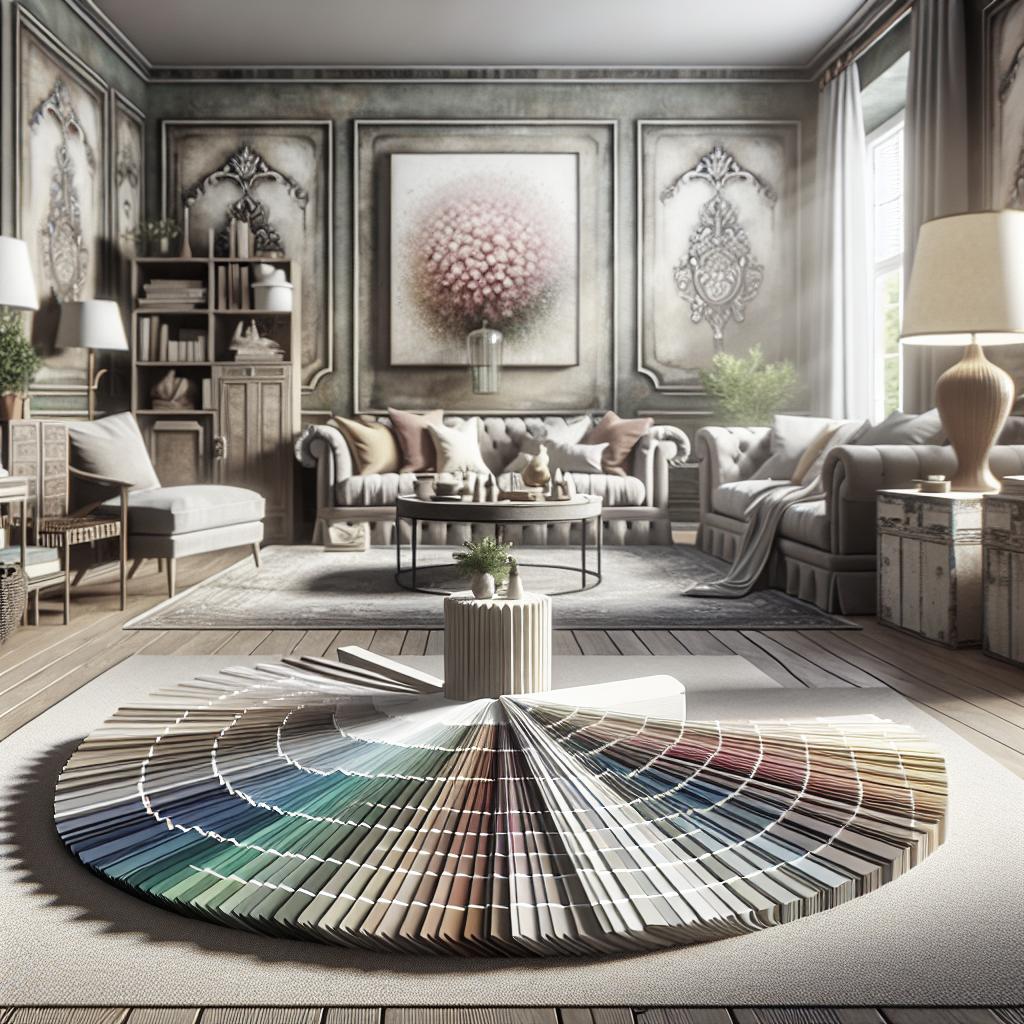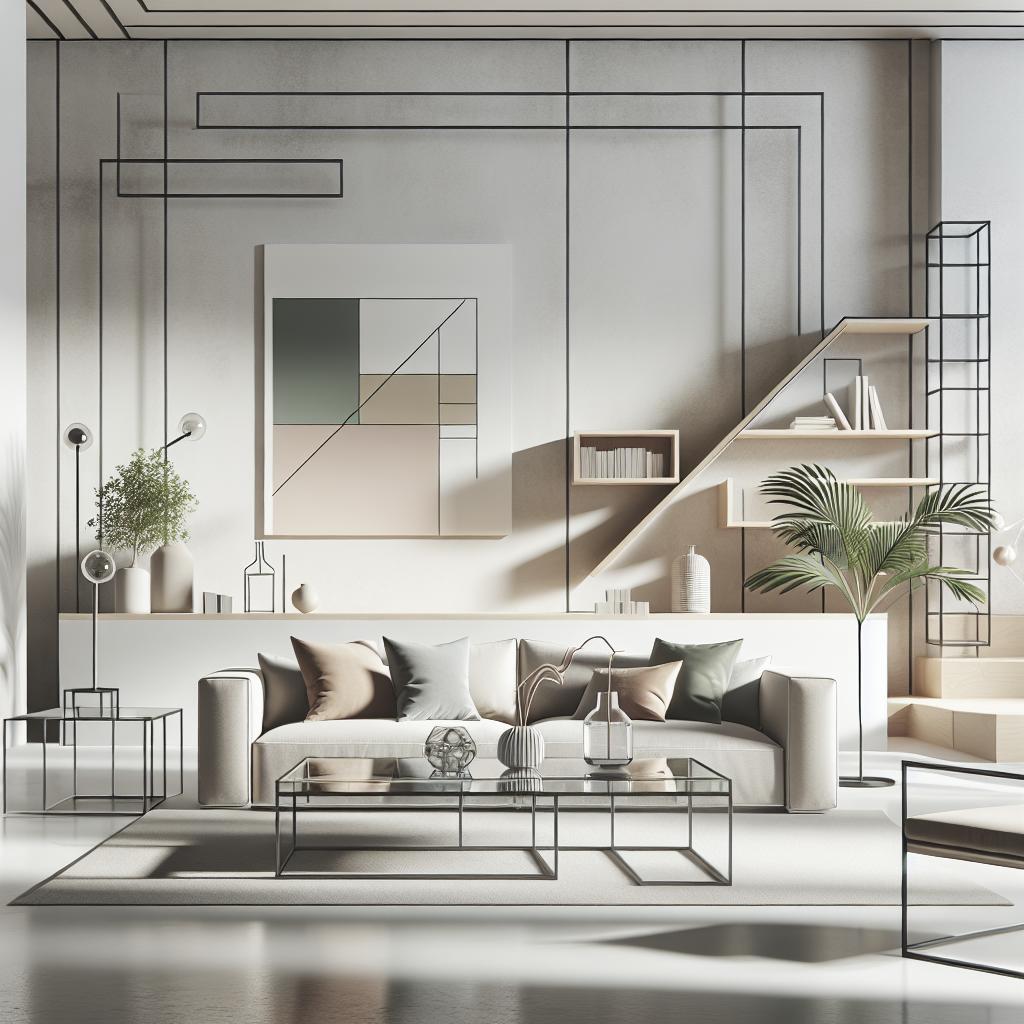When deciding on the look and feel of your home, one of the most significant choices you’ll make is selecting a color palette. Your chosen colors can express your personality and set the mood in each room. With countless options, it’s essential to choose wisely to ensure a harmonious and visually appealing environment. This blog post will guide you through four strategic approaches to selecting the right color palette for your home. We’ll begin with an exploration of color inspirations and their psychological impacts, before diving into practical advice, like pulling colors from dominant patterns, structuring colors in a room from top to bottom, and starting your palette selection with the formal areas of your home. These steps will help you to craft a cohesive and well-balanced color story for your home, reflecting both elegance and functionality. ### Pick a Color, Any Color Color is the cornerstone of your home’s aesthetic. It can evoke emotions, complement architecture, and reflect personal style. When picking a color, consider what mood or sensation you want each room to communicate. For instance, blue hues can evoke calmness and tranquility, making them ideal for bedrooms or bathrooms, while vibrant colors like red and orange can energize a space, perfectly fitting for living rooms or kitchens where interaction and movement are abundant. Before settling on a color palette, it’s vital to gather inspiration. Look through design magazines, Pinterest boards, or nature photos. Pay attention to colors you are naturally drawn to—they can offer a clue about your personal color preferences. Once you have a feeling for what you love, choose a base color that will serve as the foundation for your palette. This color should ideally resonate with your personal style and match the intended mood of the space. A key aspect to consider is the architectural style of your home. Certain colors may naturally tie in with the design elements of your space. For example, historical homes with classic features may family well with traditional colors like warm neutrals, while minimalist apartments may better complement cooler, neutral tones that emphasize simplicity and space. ### Choose a Color Scheme From the Largest Pattern in the Space Incorporating existing patterns in your space is a smart way to build a cohesive color scheme. Large patterns such as those found on rugs, upholstery, or artwork often contain multiple colors that can serve as a robust foundation for your color palette. By selecting colors from these patterns, you can effortlessly link together the elements of the room. Begin by identifying the dominant color in your chosen pattern, and let it guide the room’s color journey. This hue can serve as a major element, appearing on walls or major furniture pieces. Don’t forget about secondary colors in the pattern, as they can play roles in accent pieces or feature walls, creating a balanced visual narrative and adding depth to the design. When choosing from a pattern, pay attention to the proportions and color distribution within it. Patterns naturally offer a sense of balance and cohesion. Emulating this balance in your room’s decor ensures that the design is tied together effortlessly and stays true to the foundational pattern’s integrity. ### Decorate From Dark to Light, Vertically Designing with a vertical color strategy draws inspiration from nature: darker shades ground us, while lighter shades lift our gaze to the sky. This natural color transition can be emulated in your home to create a comfortable and appealing ambiance. The idea is to have darker colors at the bottom (like floors), medium shades on the walls, and the lightest hues on the ceilings. Starting from the floor, select a color that is rich and perhaps a bit darker than other elements. This color will act as an anchor point. It could be a deeper wood-tone for flooring or a dark rug that sets the stage for the lighter shades above. A steady upward transition creates a comforting gradient effect. On walls, choose a medium-intensity tone that complements the floor yet leads the eye upward. For the ceiling, deploying the lightest shade can not only make the room feel more expansive but also mimic the boundless feel of an open sky. This effect is ideal for spaces that you wish to feel airy and open. ### Start With the Formal Areas of the House Formal areas, such as living rooms and dining spaces, often serve as the home’s showpieces. Beginning your color selection here sets a refined tone for the rest of the house. Since these areas typically receive the most traffic and attention from guests, choosing a sophisticated and welcoming palette is essential. Start by assessing existing furniture pieces or art in these spaces that may dictate or influence your palette. Select a primary color that harmonizes with these elements and sets a base that can be varied upon throughout the rest of the house. Neutral shades often work well in these areas but don’t be afraid to incorporate bolder accents through accessories or standout furnishings. Once you’ve established the palette for formal spaces, you can extend this color story to adjacent rooms for coherence. Employ accent colors strategically to maintain variation and interest without breaking the continuity. This approach allows you a degree of freedom while staying grounded in your chosen scheme. ### Summary of Main Points | Strategy | Key Insights | |———————————————|————————————————————————————————| | Pick a Color, Any Color | Use color to evoke desired moods and coordinate with architectural style and personal taste. | | Choose a Color Scheme From the Largest Pattern | Use dominant colors from patterns to build cohesive room palettes. | | Decorate From Dark to Light, Vertically | Utilize a natural gradient from dark floors to light ceilings for comfort and openness. | | Start With the Formal Areas of the House | Set the tone in formal spaces with a sophisticated palette, maintaining cohesion throughout. |


